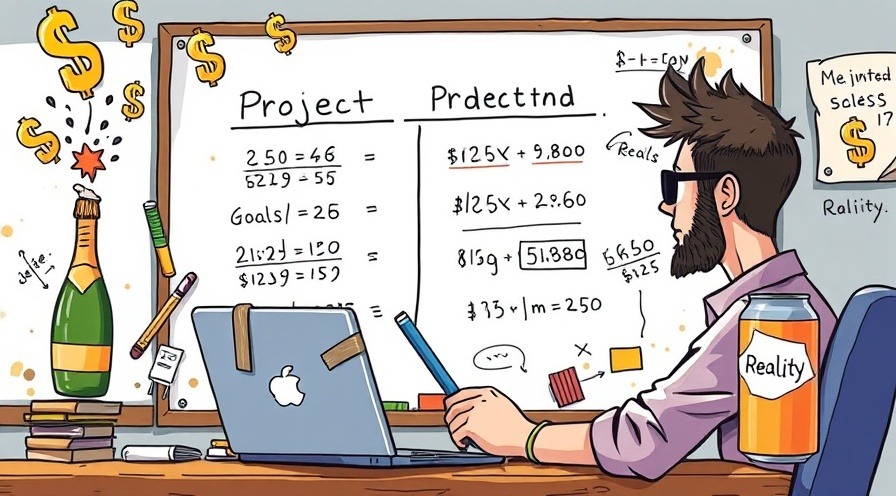
Project Budgeting When You’ve Got Champagne Goals and a Beer Wallet 💸
Budgeting Like a Broke Genius
#ProjectBudgeting #ChampagneGoalsBeerWallet #CompTIAProjectPlus #BudgetBoss #PK0005 #ProjectMoneyMatters #ScopeVsSpend
TL;DR – Budgeting Isn’t Just for Accountants (or Sadists)
Project budgeting is about more than numbers—it's survival.
You'll need to know cost estimation, budgeting methods, and resource allocation.
CompTIA Project+ will test your knowledge, and your sanity, on budget inputs, tools, and outputs.
🧮 Why Budgeting Feels Like a Trap—and Why You Still Gotta Do It
Imagine this: You’re asked to build a spaceship…
But your budget is $750, a roll of duct tape, and the leftover birthday cake from marketing.
Welcome to project budgeting.
💼 Budgeting, Project+ Style: What You Need to Know
You’ll need to wrap your brain around:
Cost Estimation Techniques
Budgeting Inputs & Outputs
Resource Allocation
Cost Baselines
Monitoring & Controlling Costs
Translation? It’s like trying to plan a vacation with Monopoly money while everyone still expects a 5-star resort.

🧠 Budgeting Concepts, the Broke Genius Way
💸 1. Cost Estimation: The Art of Making Wild Guesses Look Scientific
There are four common methods to estimate project costs. Each one is its own flavor of optimism:
Method |
What It Means |
Real-World Analogy |
|---|---|---|
Analogous |
Use past project data |
“It cost $10K last time, so this one should too… probably.” |
Parametric |
Math-based estimating using units |
“If 1 foot of fencing = $12, then 500 feet = uh-oh.” |
Bottom-Up |
Estimate every single task, then total |
“If I price out each LEGO brick, I’ll know how much the Death Star costs.” |
Three-Point (PERT) |
Optimistic + Pessimistic + Realistic / 3 |
“Best case, worst case, and the nightmare in between.” |
✅ Project+ Tip: Expect questions asking which method is most accurate (spoiler: bottom-up wins) and which is fastest (analogous or parametric).
🏗️ 2. Resource Allocation: AKA “How Many Interns Can We Realistically Assign to This?”
Budgeting isn’t just about money—it’s about people, tools, and time.
You need to know what resources you have, what they cost, and how much of each you'll use.
Tools that help:
RACI charts (who does what)
Resource calendars (when they’re available)
Work effort estimates (how long stuff takes)
💡 Pro Tip: Avoid over-allocating. If Janet from QA is on six projects, she’s not your unicorn—she’s your burnout risk.
📉 3. Creating a Budget: AKA Drawing the Line in the Sand (and Then Watching It Move)
Once you have your estimates, you roll them into a cost baseline.
This is the official “we pinky swear this is what it’ll cost” number.
It includes:
Labor
Materials
Equipment
Overhead
Reserves for unexpected shenanigans (hello, risk!)
💥 4. Controlling Costs: Keeping the Budget From Spontaneously Combusting
Key tools for controlling your budget include:
Earned Value Management (EVM):
Compares actual performance vs. planned.
If you like formulas and sweating slightly—this one’s for you.Change control process:
Any change to scope or schedule impacts the budget.
Without control? You’re toast.

🧾 Real-World Example: Budgeting on a $500 Reality Show-Level Budget
Project Goal:
Redesign the company intranet. (Yay.)
Budget:
$500, plus whatever snacks are leftover in the breakroom.
Steps:
Use analogous estimating: Last intranet project cost $750. You're already behind.
Use bottom-up estimating: Estimate hours for each task and apply hourly rates.
Build a cost baseline. It’s laughably small, but it exists.
Reserve 10% as contingency, because something will break.
Track every penny with EVM and annoy everyone with your spreadsheets.
❓ What Project+ Might Throw at You
Question Example:
What is the most accurate cost estimation method?
✔️ Answer: Bottom-Up Estimating
Another One:
You are 50% through a project, but have used 75% of your budget. What should you do?
✔️ Answer: Initiate corrective action and analyze the variance. (Also: scream into a pillow.)

🤯 Budgeting Isn’t Sexy—But It’s Where Projects Live or Die
Project budgeting may not come with fireworks, but it does come with project survival.
It helps you tell your stakeholders:
What you need
Why you need it
When it’ll be spent
And why it’s not your fault the servers cost more this year
🔜 Next in the Series:
👻 “Vendor Drama & How to Survive It: Project Procurement for PMs Who Hate Red Tape”
 Add Row
Add Row  Add
Add 




Write A Comment